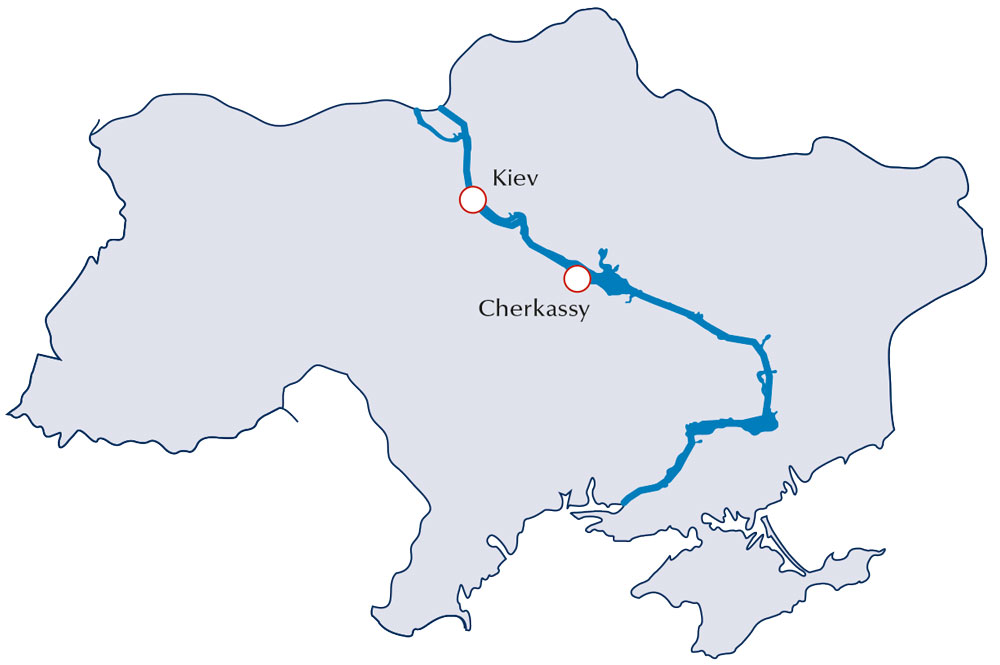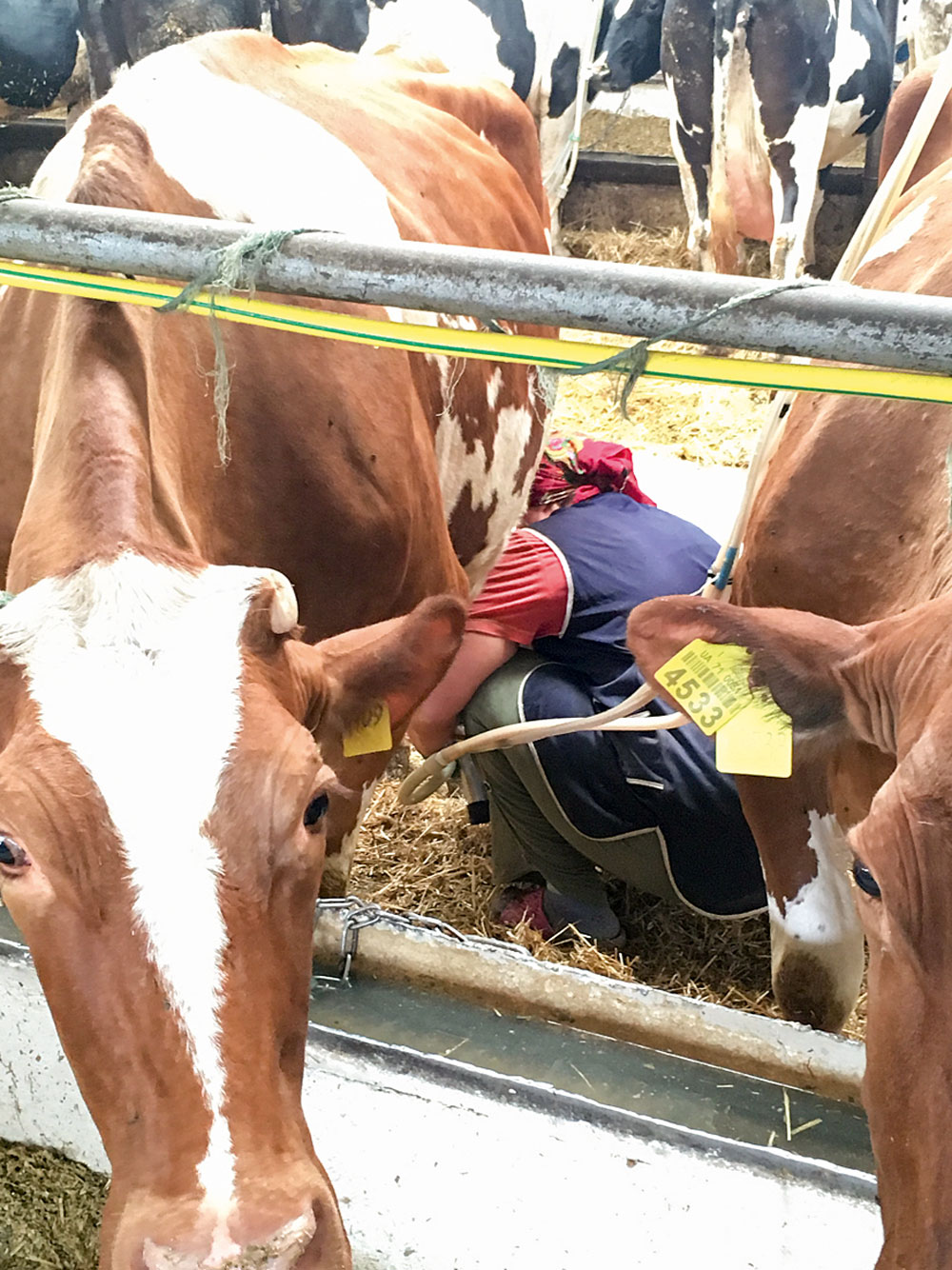Ukraine: Europe's »Middle East«
By Dr Christian Bickert
Think of the worst farm track you know. Imagine this track being continually rutted by heavy trucks and track laying vehicles with the annual aggravation of hard winter frosts. Even then, you can be sure that every meter of such a track will still be better than the roads outside the Ukrainian capital, Kiev. Put another way, transport infrastructure here is as bad as the famous black earth farmland is good. And we are not discussing the war zone in Donbass. We’re talking about central Ukraine, near the 300 000-population city of Cherkasy on the river Dnieper.
Rich land, poor people
This describes very well the general situation in Ukraine, and especially that of agriculture. As modern and well developed as Kiev is, with a real feel of a flourishing and ambitious middle class, so poor are rural areas. The contrasts hit you hard even 50 km out of the capital. Kiev sucks the countryside dry. What remains are bad roads, poor schools and neglected health support with villages inhabited almost only by the elderly. This brings us to a core problem for agriculture: availability of (young) workers.
The reason in both cases is the same. The workers own land and if Euralis or Mr Laschenko want to farm the land, they have to hire the owners. Otherwise the fields are rented to someone else. As a result, we have milkers working in two or, depending on cow output, three shifts. On top of this, the obligatory security personnel and lots of other people with particular jobs such as feeding, sweeping the barns, or some other task. But these are elderly people, never youngsters.
No prospects for youth
»The young people have long left, heading for the cities or abroad. And here we miss their contribution to developing the farms«. This quote from the manageress of a 1000 cow herd, is repeated everywhere. The result can be seen, too. Bumping along the potholed village streets you see only old people, seldom young women with children. The statistics indicate Ukraine had a 52 m population in 1994. Now, there’s only a good 42 m left. Current minimum monthly wage is 120€. But this isn’t always paid. It’s mainly the young that go abroad and, with them, the lifeblood of the country. Behind this is not the Crimea loss, nor the conflict In Donbass. It’s exploitation by government. Ask Artur Bonda, for instance. This young Ukrainian has worked In Moscow since 2005, amongst others for the Wall Street Journal or Le Monde. »Kiev lost the Crimea because the region had been sucked dry beforehand, not because it was clawed back by Putin. The people in the Ukraine no longer see any sort of future«, he feels.
The poor transport infrastructure is the second problem that farms have to tackle
Basically, there are three possibilities in central Ukraine of getting grain to the Black Sea export harbours: per ship down the Dnieper, by rail or by truck. Unbelievably, given the catastrophic condition of the roads, trucking is preferred.
Driving grain the 600 km from Cherkasy to Odessa costs around 25 €/t. Naturally, this rate can only be achieved when each vehicle is substantially overloaded. As a rule, trucks are underway with 50 t loads, often even more. The legal gross weight limit is 42 t. The railway is seen as unreliable, not only in terms of punctuality but also because of theft. And shipping along the Dnieper is monopolised by two large-scale merchants that exploit this situation to pay farmers less for their grain.
Business transactions are based on payment in advance or cash on delivery/collection
Terms of credit are the exception. Cash remains king, even in big deals. This means that when the transporter collects grain from a farm, cash changes hands before the truck is loaded. So the larger freight concerns also function as traders. In this way, the big grain elevators on the Dnieper also pay for grain on delivery. This massive circulation of cash naturally opens the door wide to opportunities for tax evasion and corruption.
Land may be inherited, but not sold
In Ukraine, the land Is completely privatised into the hands of the former workers within the old state farms and collectives. This ownership can be bequeathed, but not sold. Apartments, houses, but also other buildings can be freely bought and sold, but any ground involved has to be rented.
The landlords themselves, often hired along with their land, are often described as »shareholders«. On the Laschenko farm there are around 3 500 »shareholders«. Alongside pure rent (which can be seen as »share dividends«) some farms also pay social insurance for the workers and nearly all farming businesses support the village community in construction projects, be these pipeline systems or building renovations. The social involvement is appropriately high because agriculture is often the only work provider rural areas. In the Cherkasy region farmland rent under such conditions is up to 200 US$/ha.
10 t/ha maize and 6 t/ha wheat
Given the situation, this might appear as a high rent. But let’s not forget the quality of the soil. This year, thanks to good rainfall around the end of June, the farms reckon on harvesting up to 10 t/ha maize grain. This is usually combined at around 18 to 20 % moisture. Yield last year was 9 t/ha. Normally, sunflowers and soybeans yield up to 3 t/ha, wheat and barley threshing out at around 6 t/ha. 2018 is expected by the USDA to provide a record harvest totalling 30 m t of maize with wheat yielding about last year’s level (26.5 m t). A massive drop in the amount of barley carted home is foreseen, with a harvest of only 7 m t expected, due to a 6 % shrinkage in area drilled, the lowest barley area on record. Parallel to this, grain maize area has increased by 7 % in Ukraine, the biggest ever. Ukraine has a special position when it comes to sunflowers: this year’s expected 15.5 m t harvest makes this country world leader by a long way in growing this crop, carting home almost one-third of the global total.
Supply of seed and fertiliser is no problem
Ukraine has its own fertiliser production plants and actually exports urea. Nevertheless, fertiliser is expensive because of transport cost. For example, KAS (urea-ammonium-nitrate) was selling end of June this year for around 230 €/t in big bags, granulated urea at 330 €/t.
Seed is cheaper. Maize and sunflower seed is also produced in this country by western European firms. For instance Euralis multiplies seed of maize, sunflowers, soybeans and oilseed rape on a large scale at Bilozirya near Cherkasy as well as running a modern seed treatment plant. With 4.5 m ha of grain maize grown in this country, Euralis delivers almost 10 % of the required seed, with a 3 % share of the 6 m ha sunflower seed market. Nearly all the large western seed firms are active in Ukraine so that the wide range of available varieties is comparable with that in West Europe. At around 90€ a unit, maize seed is a little cheaper than further west, however. Supply of agricultural machinery from all large makes is also as in the west - insofar as farms can afford the equipment.
Summary
The quality of soil on Ukraine farms would make any crop grower from elsewhere jealous. However, a look at the villages, the condition of roads, the drift from the land by young people and the rampant corruption gives plenty of warning that this country represents one of the most difficult locations of all. Europe’s »Middle East« is a paradise for arable farmers, but no attractive destination for an investment.




